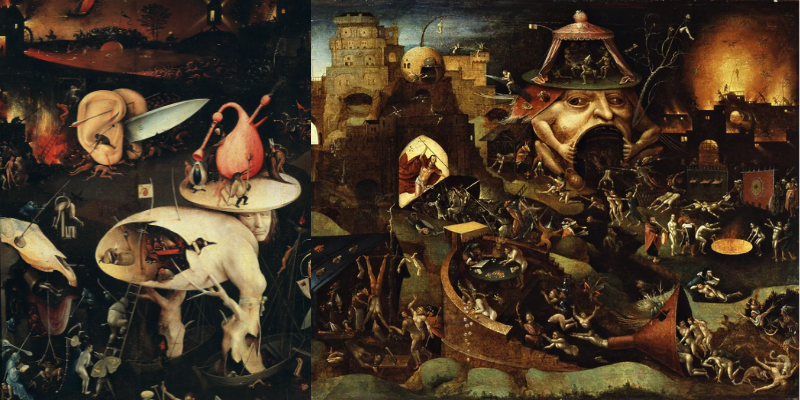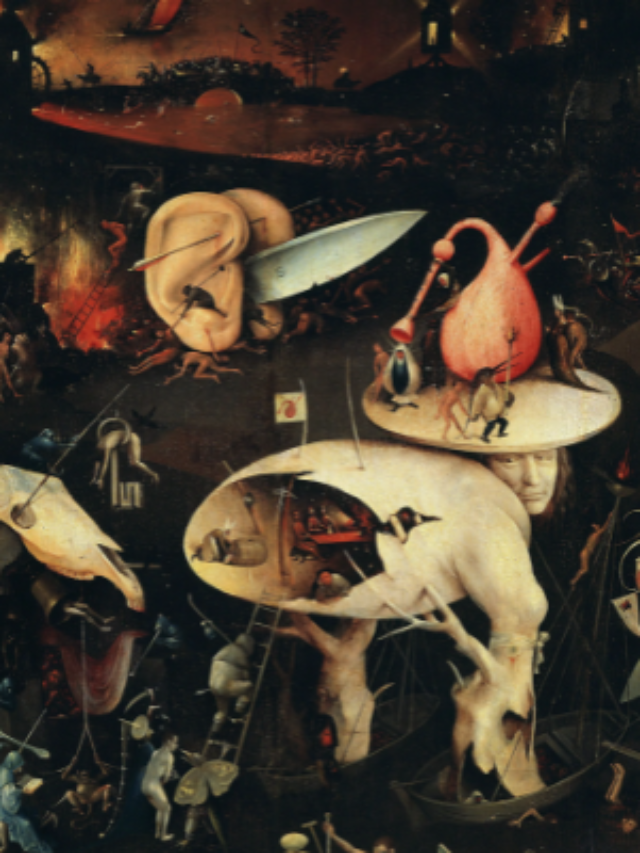The name Hieronymus Bosch is associated with dreamy paintings that capture a terrifying Boschian imagery. Bosch was a religious painter from northern Europe who was incredibly inventive and morally complex. Bosch’s grotesque imagery has come to define the grotesque genre, despite the fact that only about 25 of the original pieces remain. Some historians contend that, despite his image as an iconoclast, Bosch was actually a conservative who skillfully combined exquisite ornamental elements with the hideous, representing his firm Christian beliefs.
Bosch was among the first artists to depict abstract ideas in triptychs. While his narratives address political, social, and ecological topics, his most famous pieces, such as “The Garden of Earthly Delights,” are rich in religious symbolism. Respected as the “creator of devils,” Bosch is still mysterious, regarded by Carl Jung as the “first Surrealist” and the “discoverer of the unconscious.” His early career as a draughtsman informed his vigorous brushwork and careful detail, setting him apart from other Netherlandish painters and leaving an archive that defies critics and historians to unravel his complex narratives.
Hieronymus Bosch Art Style
The distinctive iconography of Hieronymus Bosch’s paintings explores themes of sin, human frailty, and the end of the world. His striking characteristics are his vibrant colors, which stand for either true or false Paradise, sin, Hell, and demons, respectively. Since Bosch used fantastical imagery, the meanings of his symbols are still unclear, leading some historians to speculate that they are accurate translations of biblical descriptions and sermons from the Middle Ages. With inventive devils like a winged monster, the artist investigates the many facets of the devil. Bosch’s art, distinguished by striking color contrasts and mysterious meaning, never ceases to captivate and defy explanation.
Hieronymus Bosch Triptych
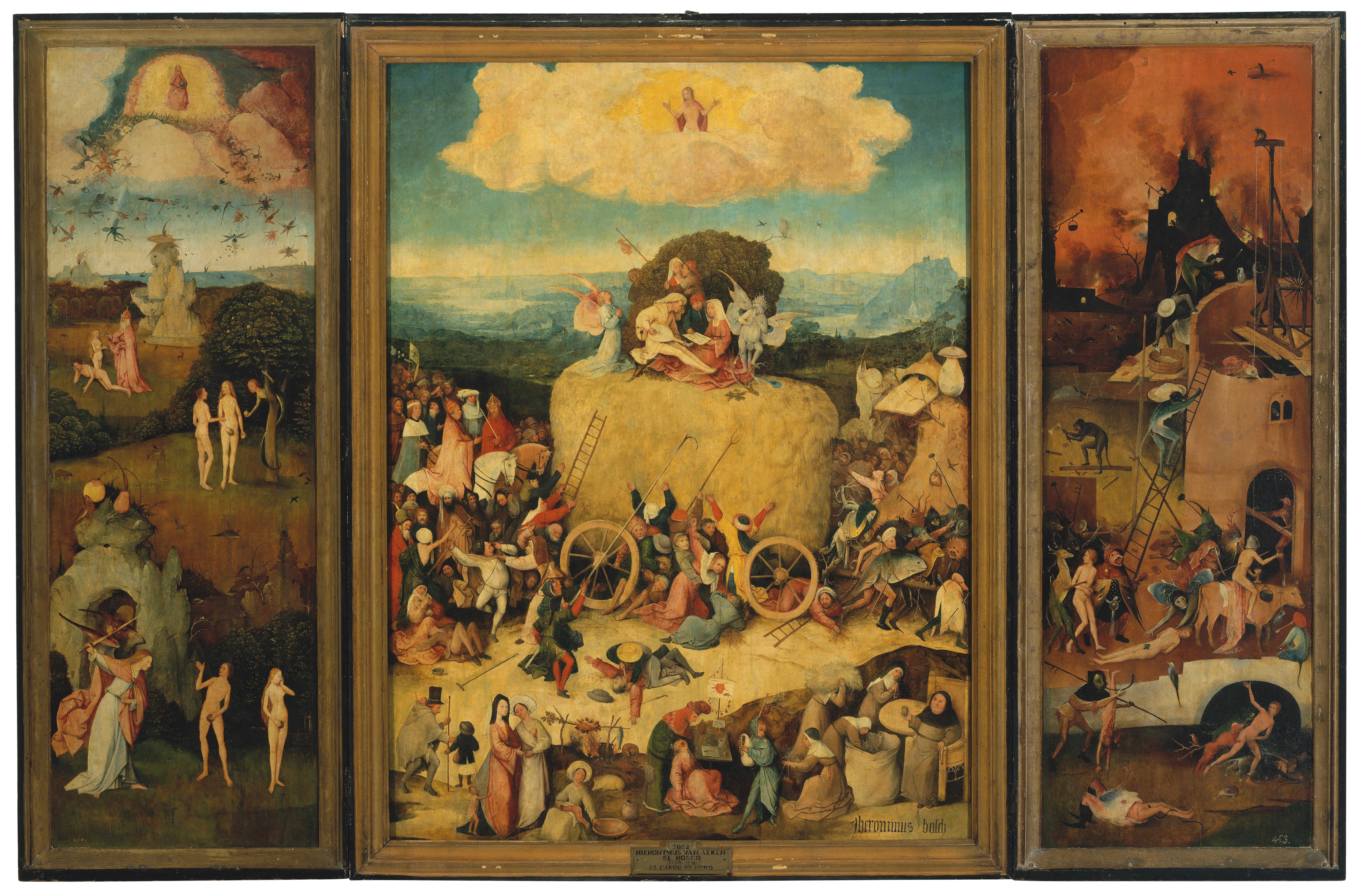
At least sixteen triptychs were created by Hieronymus Bosch; eight are known to be whole, five are in pieces, and three are listed as missing. Bosch’s triptychs are still not well examined as a unified set, despite their importance. These works, which were mostly produced in the early 16th century, show Bosch’s understanding of the triptych format. This is especially evident in the Vienna Last Judgment, where he takes advantage of the additive nature of the triptych to depict various historical moments and create a hierarchy in which the Last Judgment is central.
Garden Of Earthly Delights
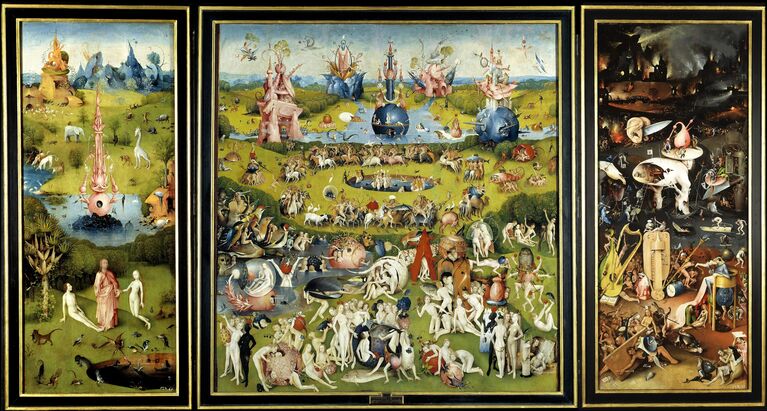
Biblical symbolism is used in Hieronymus Bosch’s famous triptych “The Garden of Earthly Delights,” which honors a marriage. A hedonistic paradise is revealed in the central panel, while the left panel portrays Adam and Eve’s happy coupling in Eden. Chaos in the scenario portends judgment, and nudity suggests that exile is imminent. For more than five centuries, art historians have been enthralled with Bosch’s masterwork, which is open to various interpretations and blends absurdity, humor, and introspection. It is, as Claire Selvin so eloquently puts it, ‘an expression of Bosch’s comedy, absurdity, and limitless imagination, offering art aficionados endless intrigue’.
- Hieronymus Bosch Butt Music

Art historians have noticed sheet music on the nude but tormented figure’s bottom in Bosch’s Garden of Earthly Delight representation of Hell, which suggests a link between indulgence and music. The notes seem to have been branded by an enigmatic entity. On the internet, readers can even hear contemporary renditions of the sheet music.
The Temptation of St. Anthony
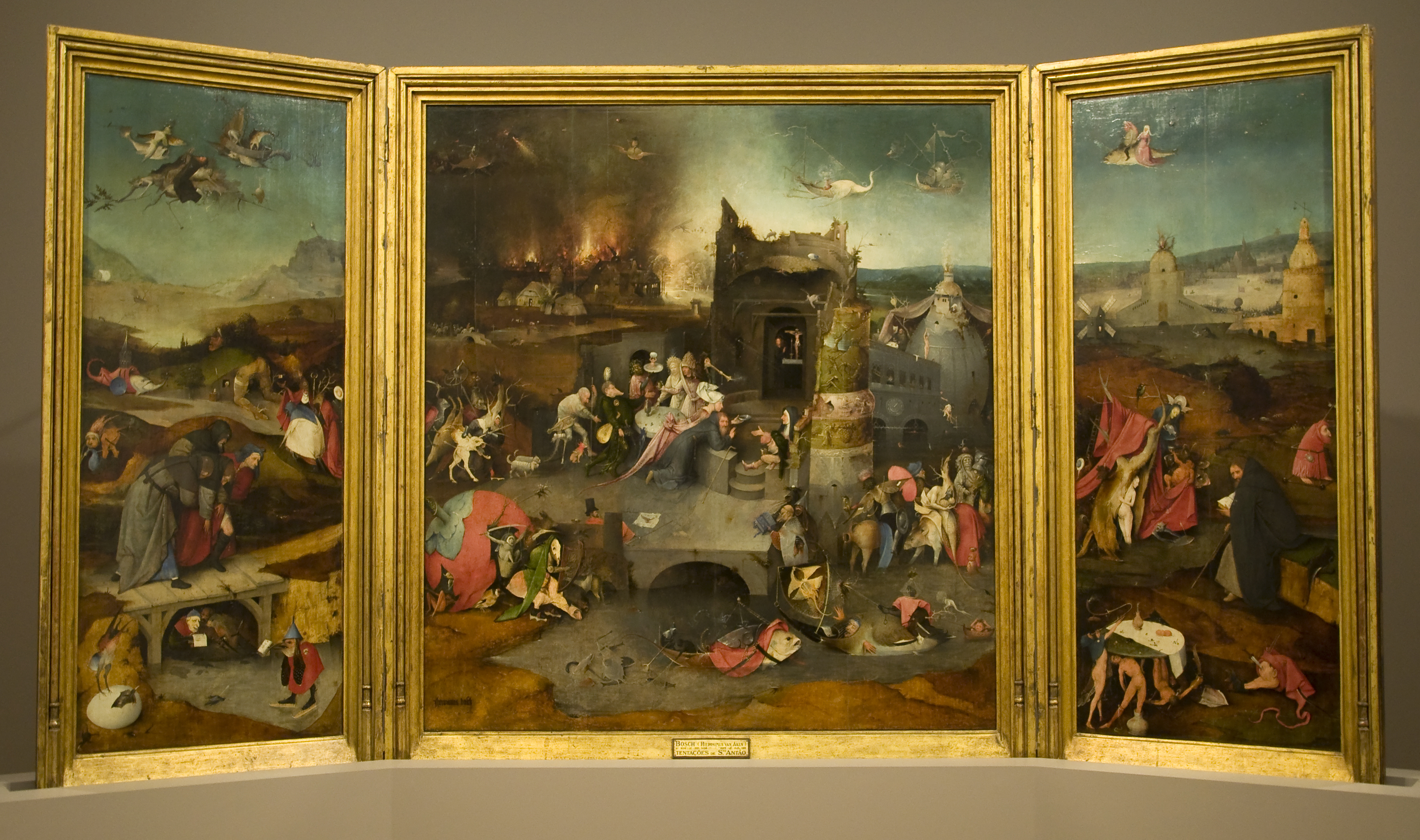
“The Temptation of St Anthony,” a painting by Hieronymus Bosch, deviates from his typical dystopian themes by showing the saint as an example of a person who can withstand temptation. Though the brushwork is sharper, St Anthony is surrounded by ominous hybrid creatures. Questions regarding its validity lingered until the Museo del Prado’s scientific examinations proved it to be authentic. Anthony is shown praying inside a tree stump, surrounded by a cloak full of symbols, and his patron animal, a pig, in this tranquil image. The setting, taken from sacred texts, conveys a serene mood despite Boschian features, emphasizing Anthony’s inner serenity and the unending victory of piety over sin.

- Bird with letter: During Bosch’s time, Saint Anthony was praised for his ability to withstand demonic temptations. A sealed letter with ambiguous meaning is held in the beak of a bird-like creature wearing skates and a tin hat. The absurd and mysterious appearance of the funnel-headed monster resembles a postman.
The Last Judgment
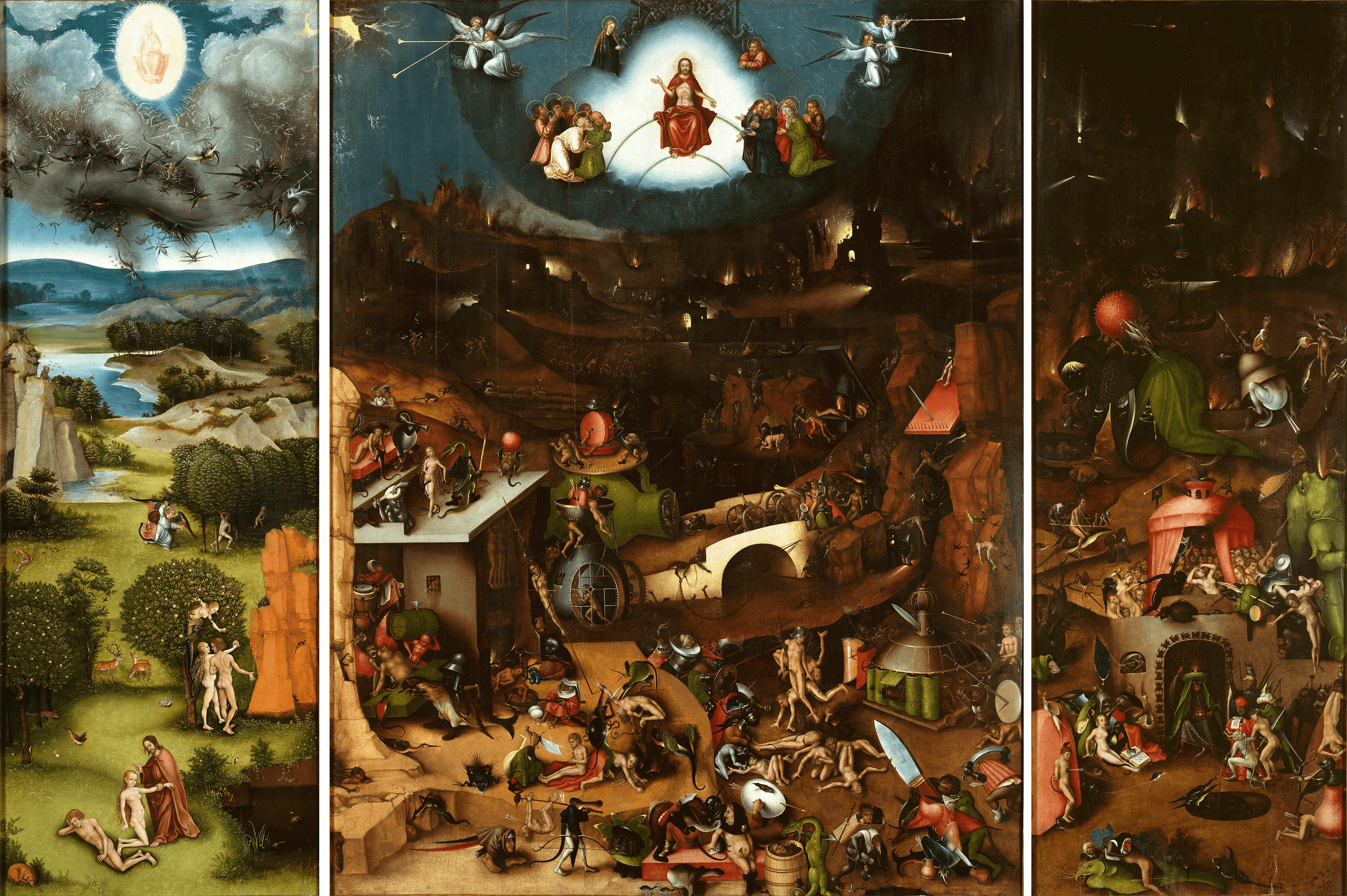
The Last Judgment, Bosch’s greatest piece, represents the stress on sin and damnation that the medieval church placed on. Bosch’s vision is distinct in that it depicts a post-apocalyptic scene, while Michelangelo’s modern rendition does not. His use of impasto brushwork subverts Flemish traditions by illustrating a narrative of horrific metamorphosis. The triptych omits purgatory, focusing on Heaven and Hell. Even if some of Bosch’s images may cause anguish, his impact can be seen in its clarity and universal resonance, sparking questions on theological influence, societal worry, or populist entertainment.
Legacy In Pop-Culture
The impact of Hieronymus Bosch extends over generations; His ongoing popularity is proof of the enduring appeal of his symbolic and enigmatic works.
Curious World Of Hieronymus Bosch

The documentary “The Curious World of Hieronymus Bosch” from EXHIBITION ON SCREEN allows readers to delve into the remarkable life and creative output of Hieronymus Bosch. The film by David Bickerstaff pays homage to the Renaissance artist using cinematic means. It showcases the Het Noordbrabants Museum’s “Jheronimus Bosch – Visions of Genius” exhibition, which delves into Bosch’s biography and offers a distinctive cinematic viewpoint on his creative genius.
Hieronymus Bosch by Michael Connelly

Michael Connelly’s Detective Hieronymus “Harry” Bosch is the protagonist of a best-selling police procedural series that began with “The Black Echo” in 1992. He is a seasoned LAPD homicide detective and the namesake of Hieronymus Bosch, the artist.
Bosch’s unique style served as an inspiration to painters such as Pieter Bruegel the Elder and Salvador Dalí. After his death, interest in his work declined, but in the contemporary age, Bosch’s influence was felt by Surrealists such as René Magritte and Max Ernst. Bosch’s dystopian themes are still relevant today, appearing in a variety of artistic mediums and even fashion, where his images can be found on mousepads, boots, and T-shirts, among other things.
References:
- The Art Story- Hieronymus Bosch
- Jacobs, Lynn F. “The Triptychs of Hieronymus Bosch.” The Sixteenth Century Journal, vol. 31, no. 4, 2000, pp. 1009–41. JSTOR
- Masterclass-Hieronymus Bosch: A Guide to Bosch’s Life and Artwork
- Wikipedia- Harry Bosch
- Museum Wholesale- Bosch Heaven and Hell
- Far out magazine-Uncovering the ‘butt song’ in Hieronymus Bosch’s painting ‘Garden of Earthly Delights’
Read Also:
11 Things You cannot Miss about The Garden of Earthly Delights by Hieronymus Bosch


